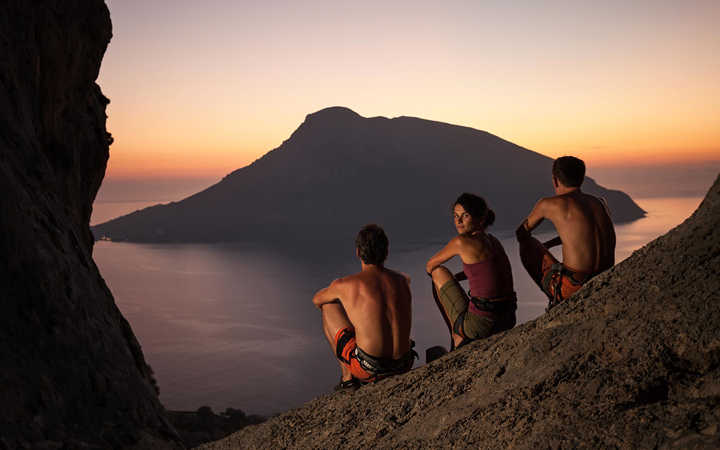Situated between Kos and Leros, Kalymnos is the fourth largest island in the Dodecanese. It is surrounded by quiet islets, some inhabited only by sheep and goats, others – like Telendos and Pserimos – with just a few houses and tavernas. The Kalymnian landscape is rocky, its majestic mountain slopes fragrant with thyme, sage and oregano – essential ingredients in the delicious honey for which the island is famous. Fertile valleys offer pleasing contrast, especially Vathi with its turquoise fiord and peaceful groves of citrus fruit.
Kalymnos is best known as home of the world’s finest sponge divers. The sea has always been a focal point for island life and its colorful traditions and sense of community remain almost unchanged. Picturesque landscapes for walking, clear blue seas for snorkeling or scuba-diving, rock faces of unique quality for climbing and a warm-hearted hospitality are just some of the pleasures that await the visitor. Kalymnos is also a good base for visiting nearby islands. Patmos, Lipsi, Leros, Kos and Nisiros are all accessible for day trips.
History
The origins of the islanders of Kalymnos are lost in the mists of time but we do know that in about the 2nd millennium B.C. the Phoenicians conquered and colonized. Evidence of the island’s prosperity in these ancient times are ruins at Emporios in the north and Vathi in the east.
Later, Kalymnos was occupied by the Persians, the Genoese, the Knights of St John and the Ottoman Turks. In 1912 the Italians took control until nearly the end of the Second World War.
Kalymnos was finally liberated on 31st March 1947 and, along with the rest of the Dodecanese islands, was incorporated into the Greek State in 1948.
Sponge Diving in Kalymnos
It seems that the barren soil of the island together with the superb beauty of the depths of the Mediterranean have played a major role in moulding the character of the Kalymnian people. They are endowed with a diversity that combines a marked bluntness with a certain nobility of the soul. These traits can be said to resemble the nature of the Sponge itself which is found at a wide variety of depths, ranging from a few centimetres to the depths of the abyss at 8500 metres. There are 5000 different species of Sponge and they can vary in colour, size and quality; some are smooth and velvety; others can be rough and hard.
Today, however, things are quite different. Owing to a destructive disease which has devastated Sponge colonies all over the Mediterranean, the people of the island have been forced to turn to other kinds of fishing. Sponge boats have given way to vessels equipped to fish for Tuna and Swordfish, both of which are in demand.












